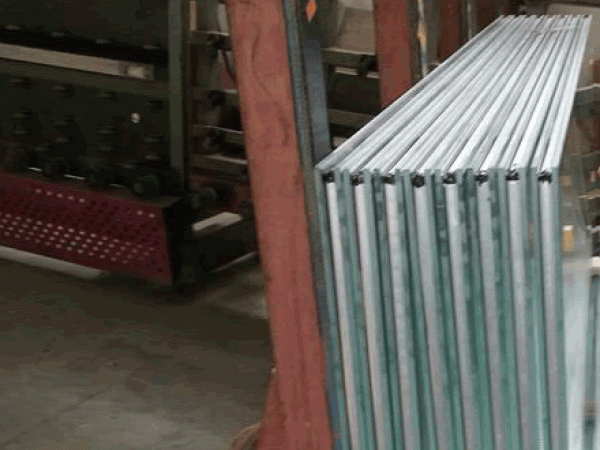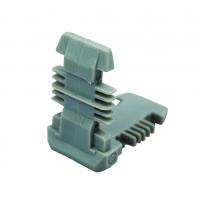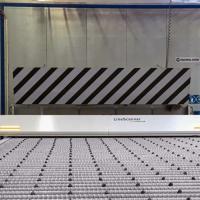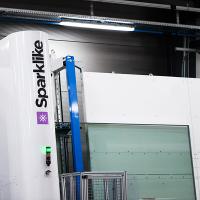Most of us prefer a comfortable indoor climate. At home and in the workplace we expect the indoor temperature to be regulated, either by heating or air-conditioning. Unfortunately, this can lead to large, undesirable heat losses from the inside of a dwelling to the outside.
In the developed countries, in particular, building energy consumption has grown steadily reaching levels of 20 – 40% of the total final national energy consumption [1-3], where a large portion of this energy is wasted because of uncontrolled heat flow to the outside. Apart from the obvious large losses that would be due to uncontrolled air infiltration, most of the heat loss is through windows. Most national standards today require far lower levels of thermal conductance for walls, floors, and roofs than for windows. For example, in Europe the building codes on average require a thermal conductance of about 0.1 W m-2 K-1 for the walls, floors, and roofs, when the window (single glass pane) is typically on the order of 6 W m-2 K-1 for the centre of glass, air-to-air thermal conductance (better known as the U-value) [1].
In most buildings the aesthetic trend to cover larger and larger areas with glass makes the energy loss through windows worse. Traditionally, in extreme cold climates this heat loss is reduced with double glazed windows: two panes of glass separated by an air gap, taking advantage of the low thermal conductivity of the air to provide an insulating barrier to the outside. The U-value of the window can be further reduced by using lower thermal conductivity gases (Argon, Krypton, or Xenon), by increasing the number of air gaps by using more glass panes, or by using low emittance coatings. Typically, a double glazed window constructed using low emittance coatings on both internal surfaces and Argon gas has a U-value of about 1.3 W m-2 K-1 [4,5]. In addition, triple glazing the window creates an extra air gap,which further lowers the U-value to around 0.6 Wm-2 K-1.
There is an alternative to the conventional double glazed gas filled window (IGU - insulating glazing unit) which is gaining much interest from the glass industry and policymakers. The vacuum insulating glazing (VIG) window is a double glass pane system that has a vacuum between the panes, rather than a gas. For example, if the gap between two panes of glass is evacuated to a pressure of 0.001 Torr (about 0.00001 psi) or less, the contribution of gas conduction and convection to the total thermal conductance is negligible. Over the past two decades two university based research groups have researched the VIG in depth: the Collins group at the University of Sydney [4-7] and the Eames & Griffiths group at the University of Ulster [8-11]. This article is the first in a series which looks at the essential outcomes this research and provides a summary of the fundamental issues.
The design of a vacuum insulating glazing
The design aim of vacuum insulating glazing is the same as any other insulating glazing technology: to have a total U-value that is as low as possible. As mentioned, the two panes of glass of a VIG are separated by an insulating evacuated gap, which is about a tenth of a millimeter wide. Unlike a gas filled gap, since the insulating property of the vacuum gap is independent of size, giving VIG glazing a smaller total width. However, it is important to note that an especially narrow gap may result in visual effects (Newton’s rings) and even evanescent-wave coupling, which would result in increased surface-to-surface radiative heat loss.
When the gap is evacuated a uniform atmospheric pressure of around 10,000 Kg per square meter (about 14.5 psi) is established over the surface of the glass. Even over relatively short distances the resulting forces will bring the glass panes into contact, which is highly undesirable. To maintain the separation between the panes, a regular array of spacers is placed between them. These spacers should be small in size and quantity, in order to both minimize the visual effect and minimize their thermal conductance. Typically, the spacers are cylindrical in shape, about half a millimeter in diameter, and positioned in a square array, spaced about twenty millimeters apart. As well as influencing the thermal conductance of the glazing, the spacer array also causes deflections in the glass, which can create detrimental stresses. Clearly, special care is needed when designing the spacer array.
An essential aspect of the VIG is the stability of the internal vacuum. The glass panes, and the opening through which the gap is evacuated, must be hermetically sealed to ‘lock-in’ the vacuum. Maintaining the vacuum at a pressure of 0.001 Torr (about 0.00001 psi) or less, for a service life of twenty years or longer is highly desirable. A physical ‘leak’ allowing air into the gap or outgassing from the glass surface, will result in an undesirable increase in the thermal conductance. There can also be gas diffusion from the outside through to the gap, through the glass panes, and possibly through the material used to bond the panes at the edge. Helium, at a partial pressure of about 0.5 Pa in the atmosphere, readily diffuses into many glass structures; nevertheless, using float or soda-lime glass the diffusion rate is negligible over +20 years.
As mentioned earlier, over the past twenty years two academic groups have worked independently, yet in parallel, on two VIG designs – the main difference being the hermetic edge seal. The Collins group VIG uses a glass frit known as solder glass, which is matched for thermal expansion to the glass panes, and typically requires a 450°C heating step to melt and fuse to the panes. The Eames & Griffiths group uses a metal edge seal, formed using indium, which wets and seals to the glass panes at a temperature of about 250°C. In both cases a relatively rigid hermetic seal is formed between the glass panes. A similar bond is formed at the opening through which the vacuum was established. The other design parameters are similar for both groups: spacer material, spacer diameter, spacer height (and consequently the vacuum gap size), spacer array spacing, the glass thickness, and the use of low emissivity coatings. However, the groups used slightly different methods for evacuating the gap.
More recently, other workers have also reported different approaches to the design, fabrication, and analysis of the VIG technology [12-14]. For example, an alternate edge seal design employs a thin metal strip/foil bonded to the glass panes on the outside surface using tin solder or an anodic bonding process. Once the glass panes are paired the metal strips are crimped or welded to form a ‘bellows’ type edge seal. There are other designs which place the metal bond between the glass panes at the edge. Other published works detail descriptions of the underlying thermal processes and mechanical properties, with much of the design options reported only in the patent literature and are not discussed here as a matter of brevity.

Figure 1: A schematic illustration of a vacuum double glazing
Figure 1 is an illustration of the VIG design developed at the University of Sydney. This design compared to others differs only in the edge seal and the method of evacuating the gap. After pairing, the panes are sealed along the four edges using solder glass. Before pairing a small hole is drilled in one of the panes, (close to a corner) and a glass tube is sealed to the pane using the solder glass. The internal gap is evacuated through this “pump-out” tube, which is then sealed using focused local heating to melt the end of the tube. There is a slight difference in the size of the panes, which simplifies the process of applying the solder glass. Once the solder glass is heated to the correct temperature it flows into the gap between the panes due to capillary action.
The thermal conductance of a vacuum insulating glazing
The contributions to the total thermal conductance of the vacuum insulating glazing are from;
- conduction through the residual gas in the gap,
- conduction through the spacer array,
- radiation between the internal surfaces of the glass panes in the vacuum gap,
- conduction through the edge seal.
There are published solutions for the thermal conductance of these thermal transfer pathways [4-7]. They are described below, with the exception of the contribution through the edge seal which will not be included in the final total thermal conductance of the VIG. The solution of the heat flow through the edge involves an added complexity because it is necessary to include the effect of the frame into which the VIG is installed. Typically, however, for a VIG with a solder glass edge seal and 3 mm thick glass panes, the edge conductance is about 0.3 W m-2 K-1. For the same conditions and 4 mm thick glass panes the contribution is about 0.4 W m-2 K-1. This is would be a similar contribution even if the VIG has a metal edge seal.
Conduction through the residual gas
The thermal conductivity of the residual gas is dependent on the interrelation between the pressure of the gas and the mean-free-path of the molecule-molecule collisions (the distance travelled by a molecule between collisions). Simply, this means that the thermal conductivity of a gas is independent of pressure, until the pressure is low enough that the distance between collisions is about the same as the distance over which the gas is contained (which is also the distance over which the heat is transported). The simplified relation (valid at low pressures) for the thermal conductance due to the residual gas in the gap with respect to gas pressure is given as,![]() where Cgas is the thermal conductance in W m-2 K-1, and P is the gas pressure in Pa.
where Cgas is the thermal conductance in W m-2 K-1, and P is the gas pressure in Pa.
Conduction through the spacer array
The spacer array is a thermal bridge between the glass panes. The resistance to heat flow through each spacer is due to the spacer (which is the thermal conductivity of the underlying material and size of the spacer) and the thermal contact area of the spacer. For a cylindrically shaped spacer this is represented as, ![]() where Rspacer is the thermal resistance in K W-1, kspacer is the thermal conductivity of the spacer material, kglass is the thermal conductivity of glass, r is the radius of the spacer, and h is the height of the spacer. If the spacers are positioned in a square array at a spacing of l between the spacers and there are an integral number of the l2 cells over the area of the glass pane, then the total thermal conductance of the spacer array is given as,
where Rspacer is the thermal resistance in K W-1, kspacer is the thermal conductivity of the spacer material, kglass is the thermal conductivity of glass, r is the radius of the spacer, and h is the height of the spacer. If the spacers are positioned in a square array at a spacing of l between the spacers and there are an integral number of the l2 cells over the area of the glass pane, then the total thermal conductance of the spacer array is given as,  where Cspacers is the thermal conductance in W m-2 K-1.
where Cspacers is the thermal conductance in W m-2 K-1.
Radiation between the surfaces in the vacuum gap
The radiative heat flow from a surface is well defined, and depends on the emittance and temperature of the surface.
When considering the heat transfer between two surfaces the relation is given as, ![]() where Csurf is the thermal conductance in W m-2 K-1, s is the Stefan-Boltzman constant 5.67x10-8 W m-2 K-4, ecomb is the combined emittance of the glass surfaces inside the vacuum gap, and Tav is the average of the surface temperatures of the glass surfaces. The combined emittance is best determined using the approximation,
where Csurf is the thermal conductance in W m-2 K-1, s is the Stefan-Boltzman constant 5.67x10-8 W m-2 K-4, ecomb is the combined emittance of the glass surfaces inside the vacuum gap, and Tav is the average of the surface temperatures of the glass surfaces. The combined emittance is best determined using the approximation, ![]() where esurf1 and esurf2 are the emittance’s of the glass surfaces in the vacuum gap. This approximation is based on the assumption that the emittance of each surface is not dependent on the wavelength and angle of incidence of the radiative heat flow [7,15].
where esurf1 and esurf2 are the emittance’s of the glass surfaces in the vacuum gap. This approximation is based on the assumption that the emittance of each surface is not dependent on the wavelength and angle of incidence of the radiative heat flow [7,15].
The emittance of each of the internal surfaces and the resulting combined emittance of the two surfaces are outlined in Table 1; an emittance of e = 0.84 is for as-received soda-lime glass with no surface coating, e = 0.2 is for a pyrolitic low emittance coating, and e = 0.03 is for a high performance sputter low emittance coating.
.jpg)
Table 1: The combined emittance of different combinations of low emissivity coatings.
It is reasonable to assume that during handling, storage, and processing, the emissivity of the coatings may change. This is particularly true for the sputter coatings, which inherently are a ‘softer’ coating. In general, this could be accounted for by assuming that the ‘real’ emissivity of the surface compared to the values given in Table 1 (per surface and not the combined effect) is about 10-15% higher.
Determining the total thermal conductance of the vacuum insulating glazing
The total center-of-glazing, air-to-air VIG U-value is given as, ![]() where hinside and houtside are the hot (inside) and cold (outside) transfer coefficients, respectively. It is important to note that the determination of the overall center-of-glazing, air-to-air thermal conductance in all cases is not strongly dependent on the glass thickness.
where hinside and houtside are the hot (inside) and cold (outside) transfer coefficients, respectively. It is important to note that the determination of the overall center-of-glazing, air-to-air thermal conductance in all cases is not strongly dependent on the glass thickness.
The total thermal conductance of the VIG is calculated as the center-of-glazing, air-to-air U-value. To determine the U-value the heat transfer coefficient to/from the surfaces of the VIG to the inside/outside environment must be well defined. Here the ASTM standard for winter condition, which was employed by the Collins group in previous work [4], is used. This is for standard winter conditions where the hot (inside) and cold (outside) transfer coefficients are taken as 8.3 W m-2 K-1 and 30 W m-2 K-1, respectively. This is for standard winter conditions at +21.1°C and -17.8°C on the hot (inside) and cold (outside) sides, respectively.
Each of the transfer coefficients is comprised of a radiative and convective contribution. Since the amount of each contribution is somewhat subjective, coefficients do vary between standards. For that reason it is useful to explore the change in the thermal conductance when the coefficients are varied. Figure 2 are plots of the center-of-glazing, air-to-air, thermal conductance for a VIG design (for a spacer radius of 0.25 mm and an array spacing of 40 mm) for a range of inside and outside transfer coefficients. Each plot is for a combined emissivity of the internal surfaces. The results clearly highlight the negligible effect of the transfer coefficients when the glazing conductance is low.

Click to enlarge.
Figure 2: A plot of the center-of-glazing, air-to-air thermal conductance as a function of the inside heat transfer coefficient. The error bars represent the change in the outside heat transfer coefficient, as labeled on the plot.
The thermal performance of conventional and vacuum insulating glazing
The air-to-air, center of glazing, thermal conductance of the VIG is determined using the solutions outlined in the previous sections. For the conventional IGU’s, assuming that the convection contribution is negligible, the U-value is dependent only on the thermal conductivity of the gas and the internal surface-to-surface radiative transfer. Here the thermal conductance of the VIG and conventional IGU’s are compared. The common design parameter of both insulating systems is the low emissivity coating on the glass surfaces. The coating is applied to one or both of the internal surfaces in the gas or vacuum gap, and so, all results shown here are plotted against the combined emissivity of the internal surfaces.
Figure 3 is a plot of the VIG center-of-glazing, air-to-air thermal conductance as a function of the combined surface emittance, (a) for different combinations of the radius of the spacer and the spacer array separation, and (b) compared to a conventional IGU with 12 mm Argon filled gaps. With the conventional IGU’s there are several combinations of acceptable gap widths, and gas type. As a matter of brevity, however, only the 12 mm Argon gap is considered.
.jpg)

Click to enlarge.
Figure 3: A plot of the VIG center-of-glazing, air-to-air thermal conductance as a function of the combined surface emittance, (a) for different combinations of the radius of the spacer and the spacer array separation (equivalent to the total number of spacers in the gap) and (b) a comparison of the VIG to the conventional IGU’s.
It is clear that the VIG technology can provide a lower U-value compared to a double or triple glazing, with a 12 mm Argon gas gap, and both systems using high performance low emissivity coatings (figure 3b). The performance of the conventional IGU’s is improved greatly if Krypton, or even better Xenon, gas is used; however these gases are more expensive. For the double glazing (over the range of combined emissivity), replacing the Argon with Krypton reduces the U-value by about 25%, with a further 25% reduction if Xenon is used. For the triple glazing the change in performance when using Krypton and Xenon gas is similar. There is also the option of increasing the gap width; however, the competing convection losses limit the advantage to be gained from an increase.
The performance of the VIG (figure 3a) implies a lower limit to the potential U-value. This is directly related to the spacer array, the size of the spacer and the spacing of the array, with a clear threshold. The changes in the spacer array, however, will produce increased stresses in the spacers and glass panes. It is critical that these stresses do not cause catastrophic failure of the VIG. Atmospheric pressure results in compressive stresses in the spacers, tensile stresses on the outside surface of the glass above the spacers, tensile stresses on the inside surface of the glass between the spacers, and at the edge of the glazing due to the rigid edge seal. These stress distributions have been studied extensively in the past [7].
The VIG is a highly insulating window pane. It does not require a special frame for installation and the durability of the insulation is ensured because of the hermetic edge seal. The performance results shown above are not necessarily the limit to the VIG design. The VIG unit can also be used as one of the panes in a conventional double glazing, or triple glazing; the hybrid VIG. The hybrid design is potentially a further 70% reduction in the thermal conductance.
References
[1] Y. Xing, N. Hewitt, and P. Griffiths, Zero carbon buildings refurbishment – A hierarchical pathway, Renewable and Sustainable Energy Reviews, 15, 3229-3236, 2011.
[2] L. Pérez-Lombard, J. Ortiz, and C. Pout, A review on buildings energy consumption information, Energy and Buildings, 40, 394-398, 2008.
[3] D. Arasteh, S. Selkowitz, and J. Wolfe, The design and testing of a highly insulating glazing system for use with conventional window systems, Journal of Solar Energy Engineering, 111, 44-53, 1989.
[4] R. E. Collins, G. M. Turner, A. C. Fischer-Cripps, J.-Z. Tang, T. M. Simko, C. J. Dey, D. A. Clugston, Q.-C. Zhang, and J. D. Garrison, Vacuum glazing – A new component for insulating windows, Building and Environment, 30[4], 459-492, 1995.
[5] T. M. Simko, A. C. Fischer-Cripps, and R. E. Collins, Temperature-induced stresses in vacuum glazing: Modeling and experimental validation, Solar Energy, 63[1], 1-21, 1998.
[6] R. E. Collins, A. C. Fischer-Cripps, and J.-Z. Tang, Transparent evacuated insulation, Solar Energy, 49[5], 333-350, 1992.
[7] R. E. Collins and T. M. Simko, Current status of the science and technology of vacuum glazing, Solar Energy, 62[3], 189-213, 1998.
[8] P. C. Eames, Vacuum glazing: Current performance and future prospects, Vacuum, 82[7], 717-722, 2008.
[9] P. W. Griffiths, M. di Leo, P. Cartwright, P. C. Eames, P. Yianoulis, G. Leftheriotis, B. Norton, Fabrication of evacuated glazing at low temperature, Solar Energy, 63[4], 243-249, 1998.
[10] S. Papaefthimiou, G. Leftheriotis, P. Yianoulis, T. J. Hyde, P. C. Eames, Y. Fang, P.-Y. Pennarun, P. Jannasch, Development of electrochromic evacuated advanced glazing, Energy and Buildings, 38[12], 1455-1467, 2006
[11] J. F. Zhao, P. C. Eames, T. J. Hyde, Y. Fang, J. Wang, A modified pump-out technique used for fabrication of low temperature metal sealed vacuum glazing, Solar Energy, 8[9], 1072-1077, 2007.
[12] H. Manz, S. Brunner, and L. Wullschleger, Triple vacuum glazing: Heat transfer and basic mechanical design constraints, Solar Energy, 80[12], 1632-1642, 2006.
[13] L. Wullschleger, H. Manz, K. Ghazi Wakili, Finite element analysis of temperature-induced deflection of vacuum glazing, Construction and Building Materials, 23[3], 1378-1388, 2009.
[14] M. M. Koebel, H. Manz, K. E. Mayerhofer, B. Keller, Service-life limitations in vacuum glazing: A transient pressure balance model, Solar Energy Materials and Solar Cells, 94[6], 1015-1024, 2010.
[15] Q-C. Zhang, T. M. Simko, C. J. Dey, R. E. Collins, G. M. Turner, M. Brunotte, A. Gombert, The measurement and calculation of radiative heat transfer between uncoated and doped tin oxide coated glass surfaces, International Journal of Heat and Mass Transfer, 40[1], 61-71, 1996.
AUTHOR:
Dr. Cenk Kocer - Research Fellow, University of Sydney
Dr. Cenk Kocer is a researcher at the University of Sydney, with over 15 years experience in the area of materials science. His main area of interest is glass as a structural element, with an emphasis on glass insulating technologies. Using experimental and numerical (such as finite element analysis) methods, he is involved in the detailed study of the thermal and mechanical properties of insulating materials; in particular, vacuum insulating windows.

















